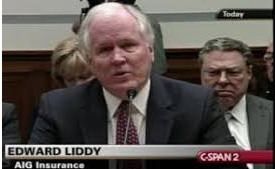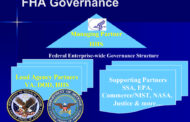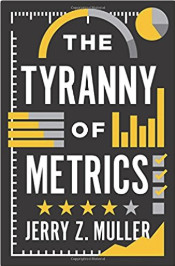Project Destiny is an initiative for restructuring the health care and pharmaceutical business.
American Insurance Group (AIG)
 The research into Project Destiny began after Edward Liddy, appointed CEO of AIG mentioned it in a congressional hearing about the use of public funds to bailout AIG after the economic meltdown in 2008. The title of the hearing was AIG Collapse and Rescue, Liddy Testimony. It was first broadcast on C-span on May 13, 2009.
The research into Project Destiny began after Edward Liddy, appointed CEO of AIG mentioned it in a congressional hearing about the use of public funds to bailout AIG after the economic meltdown in 2008. The title of the hearing was AIG Collapse and Rescue, Liddy Testimony. It was first broadcast on C-span on May 13, 2009.That there would not be a connection between the Project Destiny as an initiative of the Pharmaceutical Industry Associations and the American Insurance Group’s (AIG) secretive Project Destiny is unthinkable. But even if there isn’t, Project Destiny deserves close scrutiny.
According to the Congressional testimony of Edward Liddy, CEO of AIG in yesterday’s hearing, if AIG were to reveal the details of their version of Project Destiny, it would inhibit their ability to “restructure” the units of AIG’s business that the taxpayers bought – and it would put their competitors at an advantage. In view of what the Pharmaceutical Industry’s Project Destiny is about – and when coupled with the plans for the ‘New Health Care’ system, it makes me wonder if AIG isn’t packaging up and selling off their professional liability policies for health care providers because my own seat of the pants risk analysis is that professional liability insurance isn’t going to be a desirable business once the full picture of the ‘New Health Care’ system is revealed. And if that is what they are doing, then the American taxpayers are being set up for another bailout – or other insurance companies are being setup to buy toxic assets that will put them under – and then AIG will step back in and pick up the profitable assets after the “unlucky” insurance companies fail.
Project Destiny is being promoted by several large pharmaceutical corporations and pharmacy industry associations is to have a new health care specialty recognized – but before describing that, who’s behind the initiative is most interesting:
Pharmaceutical Industry Supports Visionary Project Destiny Initiative, USA
The contributing companies are sanofi-aventis, GlaxoSmithKline, Boehringer Ingelheim Pharmaceuticals, Pfizer U.S. Pharmaceuticals and Wyeth. Representatives of these five pharmacy industry leaders will join with representatives of three pharmacy associations on the Project Destiny Industry Advisory Committee.
The American Pharmacists Association (APhA), the National Association of Chain Drug Stores (NACDS) and the National Community Pharmacists Association (NCPA) announced the initiative last month. The end result of Project Destiny will be the development of a strategic plan that validates community pharmacy’s future role in the delivery of health care as a valuable and integral component, which is accepted and recognized by patients, payers and policymakers for the patient care services that they deliver.
The associations selected BearingPoint to execute the initiative, which will position the pharmacist as the medication expert and the key provider of medication therapy management services to patients. Bearing Point’s evaluation is nearly half-way completed.
Who is Bearing Point?
See Note at the Bottom about this Source Watch entry.
Bearing Point – from Source Watch (go to the original article for hyperlinks)
BearingPoint was formerly KPMG Consulting Inc., the consulting division of the huge accounting firm KPMG LLP that was brought down in the Enron/Arthur Anderson scandal of 2002. On February, 8, 2001, the consulting branch was officially separated from its parent due to a public offering on the company. When the Enron scandal broke, they changed their name to BearingPoint and subsequently acquired the operations left behind by the deteriorating Arthur Anderson. [1]
In July of 2003, BearingPoint was awarded a contract by USAID worth $79.5 million to facilitate Iraq’s economic recovery with a two-year option worth a total of $240,162,688.[2][3] Responsibilities in this contract include:
1. Creating Iraq’s budget
2. Writing business law
3. Setting up tax collection
4. Laying out trade and customs rules
5. Privatize state-owned enterprises by auctioning them off or issuing Iraqis shares in the enterprises.
6. Reopen banks and jump-start the private sector by making small loans of $100 to $10,000.
7. Wean Iraqis from the U.N. Oil-for-Food Program, the main source of food for 60% of the population.
8. Issue a new currency and set exchange rates. [4]In January 2003 BearingPoint won a $3.95 million contract financed by the World Bank to aid the Afghanistan government upgrade its accounting system.[5]
In March of 2003, USAID awarded BearingPoint a $39.9 million contract to help rebuild the economy in Afghanistan.
[Note: There is more about KPMG on SourceWatch – do read it because it’s significant. Also, it’s useful to know that it was KPMG that set up the European Infrastructure tax shelters that allowed U.S. corporations to lease infrastructure and to write it off their American tax returns. And that initiative was a plan by the European Union to get money to pay for common infrastructure documented in Global Ponzi Scheme]
Senate Hearing on KPMG’s corrupt tax shelter business, November 2003
[Note: My original article: Nightmare of Project Destiny was written in 2009 and is published on my old website channelingreality.com As I was copying it here I was checking links and I noticed that on SourceWatch, they identify Bearing Point as being the firm that was brought down in the Enron scandal. This was news to me because the accounting firm that the media most focused on was Arthur Andersen (AA). Regardless, the aftermath was that accounting firms were prohibited from being both consulting firms and accounting firms in the same company. Arthur Andersen went out of business under that name and re-emerged as Accenture. In this article in the Baltimore Sun, KPMG which is the international parent company of Bearing Point wanted to buy the AA consulting business as a consequence of the new rules in the industry. May 9, 2002, KPMG vies for pieces of Arthur Andersen]
In another article at the same industry website, this article was found:
Pharmacy Groups Unveil Findings, Future Of “Project Destiny”
According to initial results of the landmark “Project Destiny” initiative, community pharmacy can ensure its healthcare services beyond dispensing medication are embraced broadly, if it acts decisively and cooperatively with healthcare industry stakeholders. The three pharmacy groups advancing the initiative now are developing a strategic plan to advance the concepts identified in the first phase, which hold promise for healthcare quality, access and affordability.
…
One key concept that emerged from the first phase of the project is that of a “primary care pharmacist,” who would work collaboratively with the healthcare delivery and financing systems and focus on managing medications, positively impacting health outcomes, reducing overall healthcare system costs and empowering consumers to actively manage their health. Putting this concept into practice would require the development of pharmacy-based Patient Care Management Services that are consistent nationwide while maintaining the autonomy of individual pharmacies.
The Patient Care Management Services envisioned in the model go beyond a narrow definition of medication therapy management and include interventions targeting 15 conditions plus polypharmacy (the use of multiple medications by a patient) that drive demand for avoidable healthcare utilization. Project Destiny would seek to leverage, and not reinvent, the work of entities already demonstrating value in some segments.
The National Association of Chain Drug Stores had an Executive Summary for Project Destiny posted on their website that is no longer there. Fortunately, it was captured and saved by this writer:
Project Destiny Executive Summary
The American Pharmacists Association (APhA), the National Association of Chain Drug Stores (NACDS), and the National Community Pharmacists Association (NCPA) have joined together for Project Destiny, an initiative intended to foster the broad embracing of community pharmacy’s healthcare services beyond dispensing medication. Pharmacists, as medication experts, are well-suited for providing patient care that ensures optimal medication therapy outcomes and can contribute to the lowering of overall healthcare costs. Project Destiny has identified potential mechanisms for offering services to patients that are valued by the healthcare system which can be replicable, scalable and economically viable for community pharmacy.
In addition, in October 2007, the Milken Institute released a report that indicated the seven most common chronic diseases in the nation put a $1.3 trillion annual drag on the economy. The report estimated the drag could reach nearly $6 trillion by the middle of the century.
The Model aligns services that are managed and delivered directly to consumers through primary care pharmacists and their teams:
Dispensing and Administering – Services related to the coordinated preparation, filling, and delivery of a customer’s prescription medications as well as administering of other medications (e.g., vaccinations).
Patient Care Management Services – Services that leverage the pharmacist’s clinical knowledge and skills related to medication management to address consumers’ health issues or concerns.
Related Health Product Recommendations – Services designed to augment consumers’ total medication and healthcare product needs through the pharmacist’s recommendations based on prescriptions, purchases or customer profile.
In addition to the services delivered directly to consumers by primary care pharmacists, the model includes Consumer, Service, and Outcomes Data services. These services focus on reporting detailed and aggregate data related to patients, services, and outcomes to prescribers, payers, funders, and consumers.
As a result of the Milken Report, the pharmaceutical corporations named above and the pharmaceutical industry associations, the Board of Pharmaceutical Specialties prepared a petition for recognition of a new specialty.
BPS analyzed these functions in 2006 in the afore-mentioned role delineation study, which describes and empirically validates the domains, tasks, and knowledge that comprise ambulatory care pharmacy practice. According to the task analysis performed for that study, the following are the domains of ambulatory care pharmacy specialty practice that are performed regardless of practice site:
• direct patient care
• practice management
• public health functions
• medical informatics and professional development
• patient advocacy
Since by appearances, it was the report from the Milken Institute report that was behind the Pharmaceutical Industry initiative for Project Destiny, I did a search on Federal Reserve and Health Care to see how much of a part the Federal Reserve was playing in this attempt to circumvent physicians in the prescription medications business. I was sure I would find information on it because I heard Alan Greedspan testify to Congress around 2004 that the health care system needed to be changed to stop spending all that money on sick people – and instead spend it on “wellness”.
Chairman Ben Bernanke,
Senate Finance Committee Health Reform Summit
June 16, 2008
Challenges for Health-Care Reform
Then something really interesting came up in my search, Tax Cheat Daschle Favors “Federal Reserve for Health“,
But while President Obama was bashing greed on Wall Street, in terms of the big bonuses paid to executives, the details of the Daschle tax scandal were starting to emerge. The scandal not only threatens to derail Daschle but undermine Obama’s national socialist health care plan.
Wall Street operator and Democratic Party moneybags Leo Hindery, who hired and paid Daschle millions of dollars and gave him a limousine and chauffeur, wrote an article for the Huffington Post in 2008 saying that he was endorsing Obama for president because the candidate believes in every American “once again paying his or her fair share” of taxes. That didn’t happen in Daschle’s case.
Follow the money….. Who is Leo Hindery? According to Forbes in 2000
Time flies when Leo Hindery is having fun. A year ago, Hindery was sitting pretty leading AT&T’s coveted Internet and broadband division.
A lot has happened since then. During his stint at AT&T (nyse: T – news – people), Hindery was caught with his pants off when he categorically denied rumors that AT&T would consider selling its stake in Excite@Home (nasdaq: ATHM – news – people). Shortly after, AT&T issued a release saying it was continuing to “explore its investment strategy in Excite@Home.” Oops–either Hindery was lying, or he wasn’t invited to any of the discussions. A week later, Hindery unexpectedly resigned from AT&T.
And he certainly didn’t stick it out much longer at his next position, but this time the circumstances were in his favor. Shortly after resigning from AT&T, Hindery accepted the position of chief executive of Global Crossing (nasdaq: GBLX – news – people) in December 1999. As chief executive of Global Crossing, he was also the head of its Web-hosting division, Global Center, which was just bought by Exodus Communications (nasdaq: EXDS – news – people) last month. Hindery will continue as chief executive of Global Center until Exodus completes the acquisition, which is expected to happen early next year.
It doesn’t look good for a young kid to change jobs like underwear, and it looks even worse for a 53-year-old high-level executive. But the last couple of years appear to be the exception to the Hindery rule. In 1988, Hindery helped found InterMedia Partners, a cable operator. Then, in February 1997, he was named president of TCI, before TCI was acquired by AT&T in March 1999. At TCI, Hindery established the reputation of a make-things-happen man. By all accounts, Hindery stuck the rough times out and was responsible for TCI’s turn around.
Most reports suggested that Hindery was hired to take care of Global Center. After Exodus bought it last month, his purpose had been served. And a profitable purpose it was. One report said that Hindery’s compensation package will entitle him to 5.5% of Global Center’s value over $2 billion. Since Global Center sold for $6.5 billion, he certainly won’t leave empty-handed.
And then – the icing on the cake. The best for last – and what I live to find – the designers – movers and shakers of “New America”. My only question is – who asked them?
The New America Foundation – Programs
John C. Whitehead, Chairman The Goldman Sachs Foundation, New America Foundation
From Whitehead’s bio: “In late 2001, he was appointed to chair the Board of the Lower Manhattan Development Corporation.”
Susan Chambers
Executive Vice President, Wal-Mart (Info on Walmart’s Trojan Horse Store Clinics HERE)
Lewis B. Cullman
Founder & CEO, Cullman Ventures, Inc.
Bal Das
Vice Chairman, Kailix Investment Advisors
Scott Delman
Managing Partner, DGZ Capital
Thomas D. Gallagher
Senior Managing Director and Head of Policy Research, International Strategy and Investment Group, Inc.
Noosheen Hashemi
President, HAND Foundation
[Note: I couldn’t find the exact page in the archive of when I extracted this info. Apparently they were going through website changes. I did find a later page in 2009 that lists Leo Hindery as a member of the leadership council.]
Leo Hindery, Jr.
Managing Partner, InterMedia Partners
Carolyn Kaplan
President, George Wasserman Family Foundation
Zachary Karabell
President, River Twice Research
Justine Kilpatrick
Jeffrey Leonard
President & CEO, Global Environment Fund
David Levine
Ruth Levine
Peter Marber
Global Head of GEM Fixed Income and Currencies, HSBC Halbis Partners
Aria Mehrabi
Principal & Co-Founder, Pacific Star Capital
Lenny Mendonca
Chairman, McKinsey Global Institute
Eric Mindich
Founder, Eton Park Capital Management
F. Noel Perry
Founder, Next Ten and Managing Director, Baccharis Capital Inc.
Eric Schmidt
Chairman & CEO, Google, Inc.; Chairman-elect, New America Foundation Board
Bernard L. Schwartz
Chairman & CEO, BLS Investments, LLC
Jonathan Soros
President & Co-Deputy Chairman, Soros Fund Management, LLC
Alan Stoga
President, Zemi Communications
John Thornton
Austin Ventures
Update – Infonet Grapevine:
Vicky,
I don’t know if there is a connection here or not, but I was reviewing the list of registered lobbyists for 2009 at the Oklahoma Legislature and found several of interest.
Among many others are:
1. AIG
2. GlaxoSmithKline (2 different lobbyists) –
3. Novartis Pharmaceuticals Corp. (2 lobbyists)
4. Pfizer Inc. (2 lobbyists)
5. Pharmaceutical Research & Manufacturers of America (PhRMA) (4 lobbyists)
6. Sanofi-Aventix Group [Aventis LTD]
7. Wyeth
The highlighted firms are on your Project Destiny list of participants.
I do not have a way to determine if they worked together, separately, or if they proposed any legislation this session that would fit in with Project Destiny.
I thought it interesting that the very firms you discovered are lobbyists in Oklahoma.
Signed A-
Originally published on Channelingreality.com on May 15, 2009
McKinsey
https://www.corp-research.org/e-letter/strategic-errors
https://archives.sfweekly.com/sanfrancisco/sleeping-with-the-auditor/Content?oid=2145288
Contractors in Iraq
https://web.archive.org/web/20100704084056/http://www.publicintegrity.org/projects/entry/297/bio.aspx?act=pro&ddlC=5
https://web.archive.org/web/20100706053606/http://projects.publicintegrity.org/wow/resources.aspx?act=total
https://www.publicintegrity.org/national-security/windfalls-war
http://articles.baltimoresun.com/keyword/kpmg
https://www.acf.hhs.gov/nhsia-definition
https://www.acf.hhs.gov/nhsia-systems-viewpoint
https://www.forbes.com/2000/10/12/1012faces.html#72da9cbb1723
Help Commission
https://pdf.usaid.gov/pdf_docs/PCAAB553.pdf
Leo Hindery
https://www.c-span.org/video/?424527-101/nga-discusses-civic-engagement-infrastructure-states-power
https://russiapedia.rt.com/prominent-russians/politics-and-society/sergey-mironov/
https://www.mcc.gov/resources/branding









